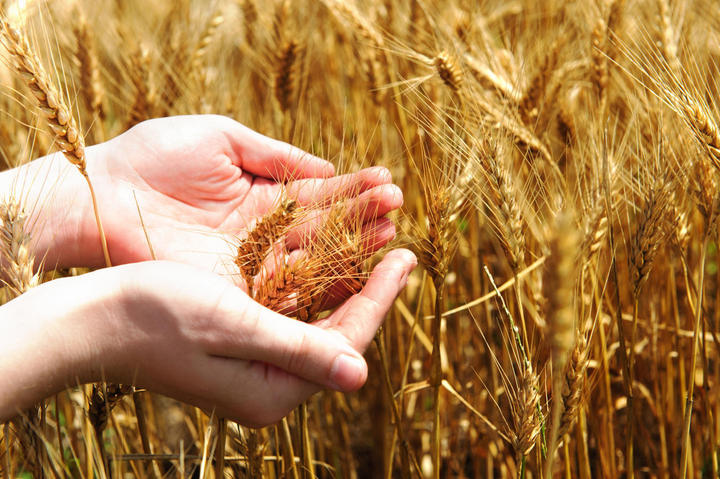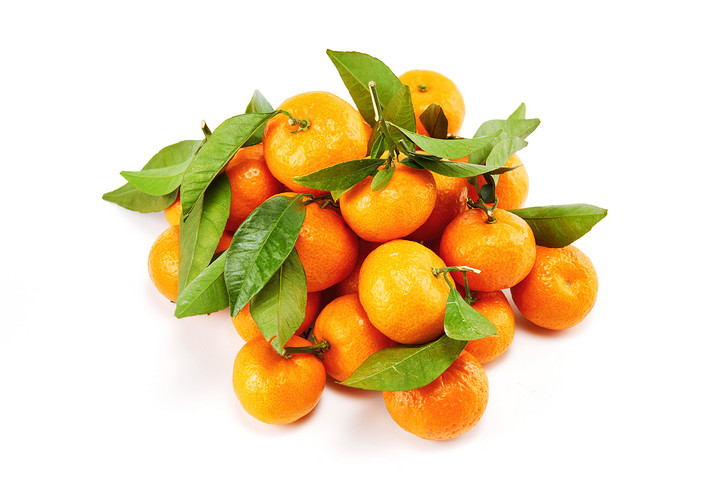


1. Healthy seedling index: The seedling period is 25-30 days, with 2-3 true leaves, a seedling height of 10-15 centimeters, intact cotyledons, no disease spots on the leaves, multiple dense roots, and sturdy roots; Half of the seedlings have red stems before leaving the bed. The survival rate of transplantation is 95%. During the seedling return period, spring planting lasts for 5-8 days, while summer planting lasts for 2-3 days or is not significant.2. Key points of substrate seedling cultivation: Firstly, substrate seedling cultivation requires the combination of substrate, root promoting agent, water retaining agent, and leaf retaining agent. Hole tray seedling cultivation requires hole tray and seedling substrate, and it is recommended to have 100 holes per tray. Water floating seedling cultivation requires seedling trays and specialized substrates for seedling cultivation. The second is that the seedling cultivation facilities are small arched greenhouses, vegetable greenhouses, and sunlight greenhouses. The bed site is windward and sunny, with a high elevation and convenient access to water and drainage, as well as convenient transportation. The third is to build a bed. The bottom of the bed is covered with agricultural film, and the bed is flat. The bed is 10-12 meters long, 1.2 meters wide, and 8-10 centimeters deep. The fourth is to select seeds. The fourth is seedling bed management. Timely sowing, according to the standard of 2-3 true leaves of seedling age, 10-15 centimeters of seedling height, and 25-30 days of seedling cultivation period, sowing should be arranged. Large seedling cultivation bases need to sow in stages and batches. (2) Sowing with sufficient moisture and suitable spacing between plants and rows. Inject root promoting agent immediately after being used. The seedbed is mainly controlled by temperature, water, and seedling cultivation. Spraying “leaf protection agent” before seedling emergence can reduce water loss and prevent wilting of off bed leaves. The fifth is to refine the seedlings before planting, with half of the young stems being red, which can improve stress resistance. Do not irrigate the seedbed 5-7 days before seedling emergence, and maintain a suitable moisture content to facilitate seedling emergence.3. Key points of hole tray seedling cultivation: Firstly, place two rows of hole trays tightly and neatly on the seedling bed, without gaps. Hierarchical cultivation of cocoa seedlings in vegetable greenhouses. The second is substrate loading. The water retaining agent first absorbs sufficient water and evenly puts it into the bottom of the hole tray. Then, fill the hole tray with a mixture of seedling substrate, clean river sand, and a small amount of water, scrape the surface of the tray, neatly stack it, and prepare the seedling bed for sowing. Thirdly, sufficient water should be poured before sowing to ensure that the seedling substrate is moist and the bottom of the hole plate is permeable; Sow 1-2 seeds in one hole at a depth of 1.5-2 centimeters. If there is a warped root covering in Gaza. The fourth is to focus on temperature control in the seedbed and prevent high foot seedlings. Irrigate the root promoting agent once, and control the water content based on the principle of “dry and long roots”. The fifth method is to use wet seedling raising, and sufficient water should be poured and delivered one day before seedling raising; The dry seedling method involves controlling water for 2-3 days before seedling emergence. After tying every 50 plants into a bundle, soak the roots in root promoting agent diluent for 15 minutes. The sixth option is to select a seedling box with a length of 60 × Width 40 × Height of 25 cm, 1500 seedlings loaded, and cannot be squeezed during transportation.4. Key points for seedling lifting and transportation: (1) Refine the seedlings before lifting. Apply a 0.1% concentration of “root promoting agent” to the bottom of the seedbed with irrigation 5 to 7 days before seedling emergence. Afterwards, the seedbed will no longer be irrigated to facilitate seedling emergence. By adjusting the proportion of red stems in seedlings to half through appropriate water control, it is considered a healthy and strong seedling. (2) Spraying “leaf protection agent” on the seedbed before seedling emergence can prevent seedling wilting. (3) When raising the seedlings, open one end of the bed and gently lift the cotton seedlings to take away a large amount of original roots, tying them into small bundles every 30-50 plants. (4) Transplant while raising seedlings. When transporting a large number of seedlings, use a seedling transport box, which is 60 in length × Width 40 × Height 25) cm; 1500 naked seedlings or 1000 potted seedlings; Seedlings can also be transported in breathable cardboard boxes or other containers, with a plastic film covering the bottom and surrounding areas, and a small amount of water added to the bottom to keep the roots moist.5. Key points for transplanting:(1) Reasonable dense planting. The transplanting density of cotton after wheat (oil) is not less than 1500-2500 plants/mu, which is beneficial for achieving high yield.(2) Apply sufficient base fertilizer. It is recommended to use slow and controlled release (loss) fertilizers. Rake the field once and apply base fertilizer. Generally, the amount of nitrogen fertilizer accounts for 25% to 30% of the total amount used during the entire growth period. For cotton fields, 2.5-3 tons of decomposed organic fertilizer, 20-25 kilograms of ammonium bicarbonate, 30-40 kilograms of superphosphate, 15-25 kilograms of potassium chloride, or 30-35 kilograms of high-quality compound fertilizer (containing 15% nitrogen, phosphorus, and potassium each) are used as base fertilizer per mu, and then cover the rake.The stubble transplanting field should be applied after returning the seedlings.(3) Transplantation method. One is the transplanting of stubble. Planting seedlings is like transplanting “, using a hole or ditch transplanting machine for transplanting. The models include single row 2ZBX-1 and double row 2ZBX-2. Cropping in wheat fields, fallow crops before planting, rapeseed or garlic before harvesting can be done without plowing and land preparation. “Board stubble” or “stick stubble” transplantation should be carried out, and the soil moisture should be suitable. “Home water” should be added while digging ditches or holes for transplantation. Before planting, the ground residue such as weeds and dead branches and leaves should be cleaned. The previous wheat stubble can also be transplanted with a board stubble. During sowing, narrow the wheat row and expand the width of the transplanted row to facilitate machine soil coverage. Clean the wheat stubble before planting, and irrigate after planting to achieve sufficient moisture to promote rapid seedling return and growth. The second is rotary tillage and transplanting. The rotary tiller with a transplanting machine implements simultaneous rotary tillage, ridge raising, transplanting, and watering of “settling water”, as well as soil sealing and compaction. It is particularly suitable for the old cotton fields in the middle reaches of the Yangtze River that have been continuously cultivated without tillage for many years, and the model is 2ZBX-3. The third is manual transplantation. Both drilling and trenching can be done, with suitable soil conditions and a depth of no less than 7 cm for seedling roots; After planting, pour sufficient “Angen Water” in a timely manner. The fourth is to use herbicides to weed after planting and returning seedlings according to requirements.Or refer to the “Illustrated Cotton Substrate Seedling Transplantation” edited by Mao Shuchun and Han Yingchun (published by Jindun Publishing House in 2014), or operate and manage according to the local standards of Hubei Province “Technical Regulations for Cotton Substrate Seedling Transplantation” (Hubei Local Standard DB42/T488-2008) and Anhui Province “Technical Regulations for Cotton Substrate Seedling Bare Seedling Transplantation” (Anhui Local Standard DB34/T864-2008).(2) Oil treated live broadcast cottonThe target yield of seed cotton is 250 kilograms per mu. The previous crop of rapeseed is harvested in mid May. It is required to sow the cotton in mid to late May and produce all the seedlings before the end of the month. It is necessary to “compete in spring for the day and summer for the time”, and rapeseed should seize the opportunity to harvest the cotton and sow it.Choose the right variety. Choose mid to early maturing varieties of rapeseed. The sowing period of oil treated cotton is 30 days later than that of spring planted cotton entering the field. Cotton varieties with early to medium maturity ranging from 110 to 120 days are selected, with compact plant types, concentrated boll setting, and good disease and pest resistance.Increase density. Cotton will be directly sown after the rape harvest in late May, and a rotary (non) fertilization compound machine can be used for mechanical plate stubble, no tillage, and precision sowing. The sowing amount of coated seeds is 2kg/mu, the planting density is 5000-6000 plants/mu, the row spacing for mechanical harvesting is 76cm, and the row spacing for manual harvesting is 80cm. Planting with soil before rainfall.Prevention and control of “barren seedlings” and “grass barren seedlings”. After planting, fertilize and raise seedlings early. After sowing, during the rainy season, it is necessary to timely sparse and prevent “seedling waste”. Timely prevention and control of weeds and weeds can be achieved through mechanical weeding between rows. Weeds in the gramineae family can use herbicides Jinggaicao Neng and Jinghecao Ke, while broad-leaved weeds can use herbicides Meimian Shuangqing and glyphosate. The dosage and method refer to the instructions for drug use.When spraying glyphosate, be careful not to stick the liquid to the cotton leaves (herbicides such as paraquat should not be used).Fertility and water management. In the early and middle stages of drought, timely watering and drought resistance should be carried out. Nitrogen (N) application ranges from 12.5 to 17.5 kg/mu, with basal application accounting for 15%, bud application accounting for 25%, and flower and boll fertilizer accounting for 60%. Apply 5-7 kg/mu of phosphorus (P2O5), with all phosphorus fertilizers applied as basal fertilizer. All phosphate fertilizers are applied as basal fertilizers, with potassium (K2O) of 10 kg/mu, and basal fertilizer and flower and boll fertilizer accounting for 50% each.Full process tuning and timely topping. The chemical regulation of oil treated cotton adopts the “light before heavy” method, with the main focus on promoting growth during the seedling stage. Promotive growth regulators such as “802” and “Duoduo” can be sprayed. Determine the topping time based on the density and number of fruit branches, but not later than the beginning of the autumn season.Prevention and control of diseases and pests. Key prevention and control measures will be taken to reduce the loss of cotton yield caused by diseases and pests, such as Fusarium wilt, Chinese parasitoid, beet armyworm, striped armyworm, tobacco whitefly, red spider, cotton aphid, and cotton bollworm.Reasonable ripening and timely harvesting. In the first ten days of October, choose sunny weather, and use 40% ethephon 150~200 ml/mu+thiophene 50~80 ml/mu to add water 50~60 kg/mu spray has defoliation and ripening functions.4、 Suitable areaThe light and simple seedling cultivation and transplanting cotton area is suitable for the cotton areas in the Yangtze River Basin and the Yellow River Basin, as well as for garlic cotton intercropping and garlic cotton transplanting in the Yellow River Basin. Direct seeding cotton after oil is suitable for the cotton region in the Yangtze River Basin. Cotton specific slow release (loss) fertilizer is only applicable to cotton areas in the Yangtze River Basin.5、 PrecautionsOne is to plant cool soil instead of wet soil, plant high-temperature seedlings instead of low-temperature seedlings, and stop transplanting when encountering cold waves. The second is to check the seedlings and replenish water after planting. In case of drought, it is necessary to replenish water. It is not suitable for cotton areas without drought resistance conditions. The third is the safe use of herbicides. Common symptoms of herbicide poisoning in seedlings in production include old and stiff seedlings, purple young stems, and delayed emergence of new leaves. Require the use of herbicides such as glyphosate or dichloromethane as required after returning seedlings and sprouting.

No reply content